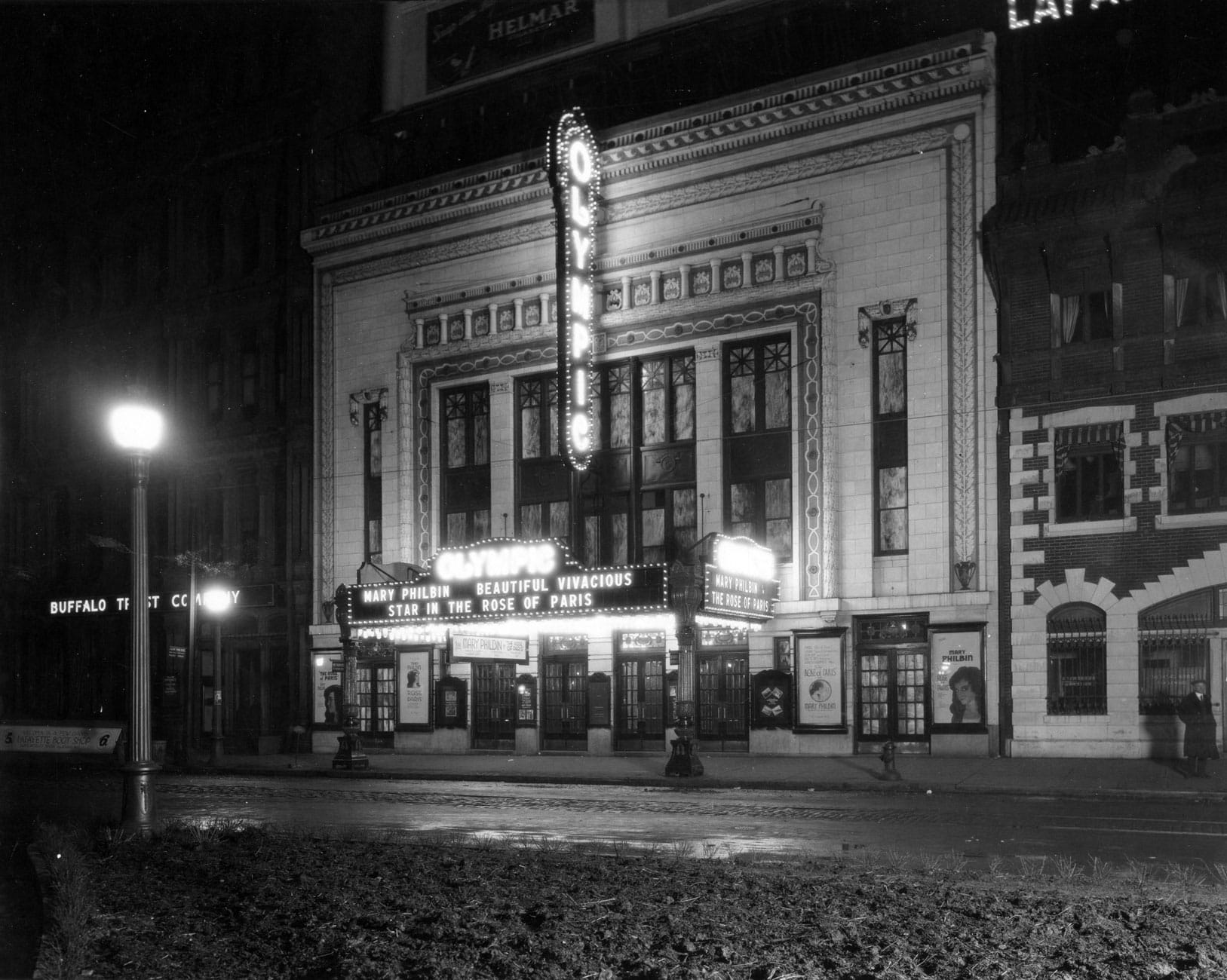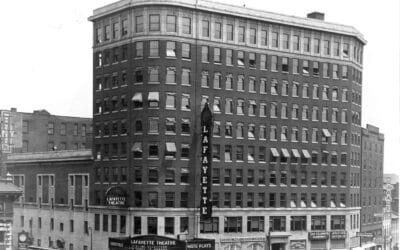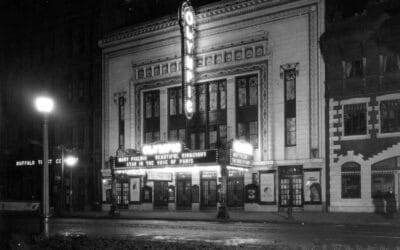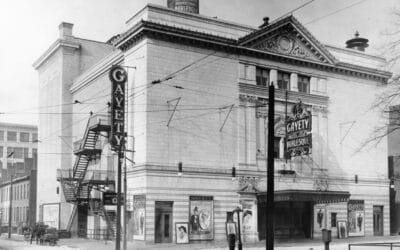Harold Arlen Exhibition / A City of Entertainment
From the 1900s to the late 1920s, music, performance, and film were changing in Buffalo as they were across America. Vaudeville and Burlesque were still popular forms of entertainment, but popular song and dance bands were on the rise and ragtime gave way to jazz. Just before the dawn of the talkies, the movie theaters employed pianists to accompany the moving images.
The city of Buffalo provided overlapping worlds of older and newer forms of entertainment and musical styles and the opportunity for work at a wide variety of venues. Buffalo was a city of entertainment with its own home-grown talent, and it was also a major stop on the traveling circuit for emerging and nationally known performers.
While still at school, Hyman began working as a candy “butcher” (vendor) at the Gayety Burlesque theater. He played the piano and organ at multiple local theaters including the Olympic and the Lafayette, accompanying the silent movies. At the age of 15, he formed his own band, the Snappy Trio with two friends, Teddie Meyer and Hymie Sandler. They appeared at local joints including the Maple Leaf Café on Oak Street and became a popular act.
In the 1920s, the East Side of Buffalo emerged as a significant center of Jazz led by African American musicians. Local and touring instrumentalists found an expanding public demand for Jazz bands and players, but racial segregation meant that venues hired white players preferentially. African American players often had to find work in clubs and bars located in the poorer sides of town, where color lines were less rigorously enforced.
Once the Volstead Act of 1920 ushered in Prohibition (1920-1933) and banned the sale of alcohol, many bars and clubs closed. Other venues opened in the Tenderloin District selling bootleg liquor, and despite his parents objections, Hyman found work opportunities as a piano accompanist. In mainstream venues, Hyman played with his band, the Snappy Trio, then the Se-Mor Jazz band after the addition of Harold Bernstein. They performed Jazz sets at the Olympic and the Lafayette where Hyman once played piano and organ. With a burgeoning performing career, the prospect of remaining in school had limited appeal. After dropping out of Hutchinson High School at 15, Hyman Arluck found his vocation in performance. Even with the intervention of a B’rith Sholom synagogue member, Jack Yellen, he could not be swayed. Later Jack Yellen and Hyman Arluck created a number of songs together as well as the Broadway hit, “You Said It!”

To counteract discrimination In Buffalo, a separate union of Black musicians, Local 533, formed in 1917.
Members of the union founded The Colored Musicians Club as an independent venue for players that remains the longest continuously operating African-American run club in America. this club, alongside the short-lived Little Harlem Club that opened in the 1930s, provided performance opportunities for African American musicians. both clubs offered venues for nationally renowned African American musicians and entertainers, making Buffalo a significant center of jazz from the 1920s onward.
Gallery
Lafayette Theater, c. 1926. Courtesy of Buffalo History Museum, Buffalo, NY.
The Lafayette Theatre
Olympic Theatre, c. 1920s. Courtesy of Buffalo History Museum, Buffalo, NY.
The Olympic Movie Theater
Gayety Burlesque Theatre, Pearl Street, 1920s. Courtesy of Buffalo History Museum, Buffalo, NY.




